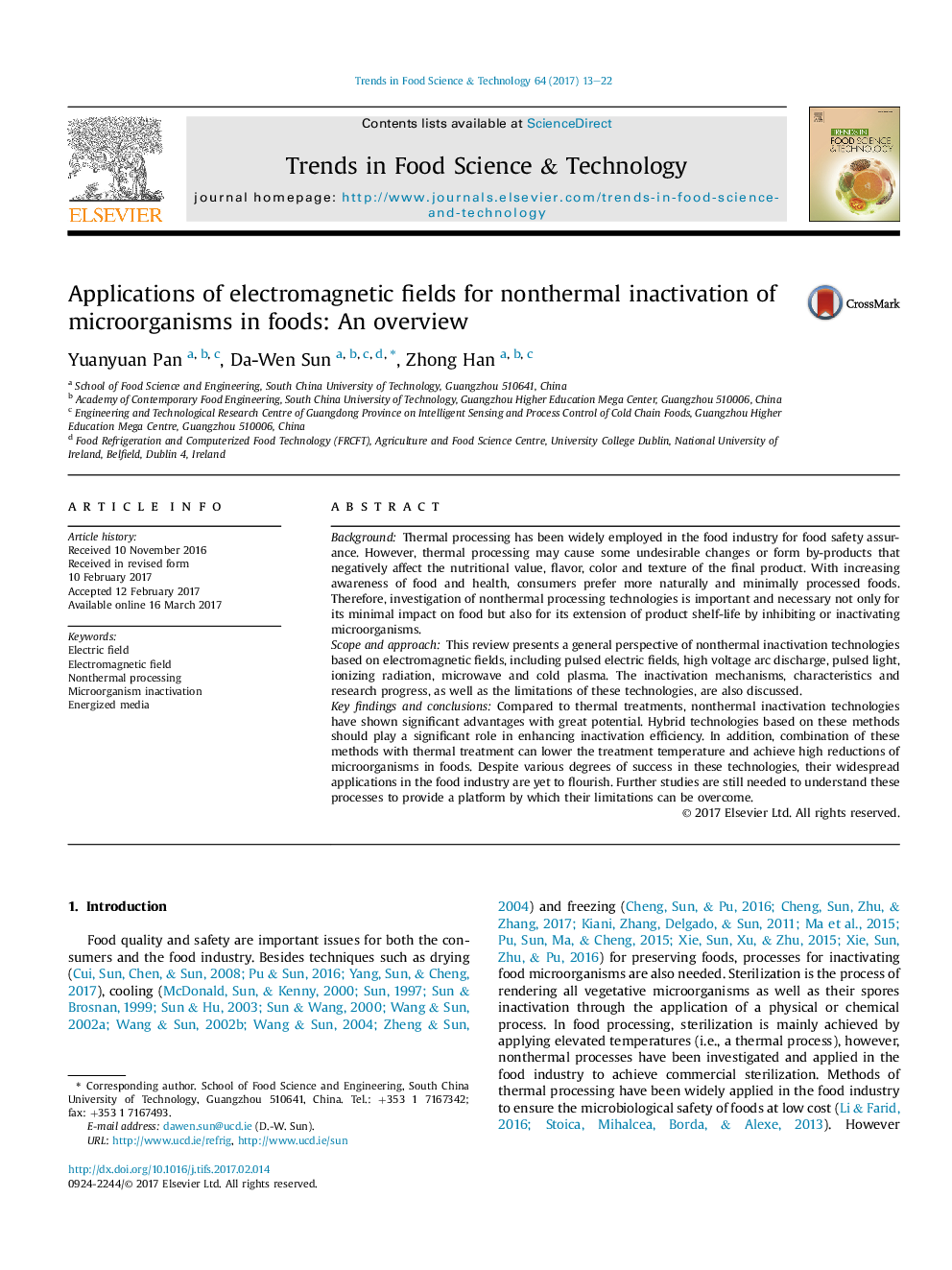| Article ID | Journal | Published Year | Pages | File Type |
|---|---|---|---|---|
| 5523772 | Trends in Food Science & Technology | 2017 | 10 Pages |
â¢Non-thermal inactivation technologies shows growing interest and necessity.â¢Perspectives of non-thermal treatments in electromagnetic fields are presented.â¢Hybrid technologies can efficiently enhance inactivation efficacy and efficiency.â¢Various non-thermal processing treatments are compared and evaluated.
BackgroundThermal processing has been widely employed in the food industry for food safety assurance. However, thermal processing may cause some undesirable changes or form by-products that negatively affect the nutritional value, flavor, color and texture of the final product. With increasing awareness of food and health, consumers prefer more naturally and minimally processed foods. Therefore, investigation of nonthermal processing technologies is important and necessary not only for its minimal impact on food but also for its extension of product shelf-life by inhibiting or inactivating microorganisms.Scope and approachThis review presents a general perspective of nonthermal inactivation technologies based on electromagnetic fields, including pulsed electric fields, high voltage arc discharge, pulsed light, ionizing radiation, microwave and cold plasma. The inactivation mechanisms, characteristics and research progress, as well as the limitations of these technologies, are also discussed.Key findings and conclusionsCompared to thermal treatments, nonthermal inactivation technologies have shown significant advantages with great potential. Hybrid technologies based on these methods should play a significant role in enhancing inactivation efficiency. In addition, combination of these methods with thermal treatment can lower the treatment temperature and achieve high reductions of microorganisms in foods. Despite various degrees of success in these technologies, their widespread applications in the food industry are yet to flourish. Further studies are still needed to understand these processes to provide a platform by which their limitations can be overcome.
